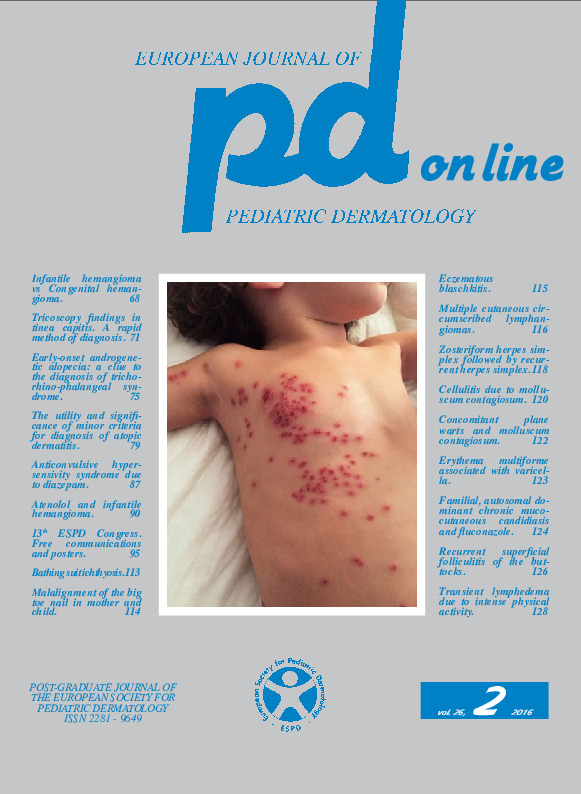Zosteriform herpes simplex followed by recurrent herpes simplex.
Downloads
DOI:
https://doi.org/10.26326/2281-9649.26.2.1235How to Cite
Bonifazi E. 2016. Zosteriform herpes simplex followed by recurrent herpes simplex. Eur. J. Pediat. Dermatol. 26 (2):118-9. 10.26326/2281-9649.26.2.1235.
pp. 118-9
Abstract
In the literature are reported zosteriform herpes simplex virus (HSV) infections, both primary and post-primary (1, 3, 5, 6). In this case we are not able to say if the first episode, particularly extensive, was a primary or postprimary infection because when we had to make a diagnosis had been too long from the first episode to search for specific IgM. However, in our opinion the first was a primary infection, due to its significant extension, much larger than the next two episodes. Numerous experimental data show that zosteriform VHS infection is related to the path that the virus runs from the sensory nerve ganglia to the skin; even in case of primary infection, VHS after entering the organism arrives first to the residential nervous ganglion and then from this site goes to the skin giving the zosteriformi manifestations. It was also shown that the coming and going of the VHS from the skin to the nervous ganglion and vice versa occur along the Schwann cells of the perineural sheath (2, 4). The zosteriform HSV infection testifies the neurotropism of HSV that is also confirmed by the concomitant painful paresthesias and the well-known encephalitis that can complicate the HSV infection.This case also shows that it is not always easy to differentiate the clinical manifestations of herpes zoster from those of herpes simplex; you have to think about the possibility that a zosteriform eruption is linked to HSV when as in this case, the child has not had contact with the wild and vaccine VVZ and this history is confirmed by the absence of anti-VVZ antibodies.

